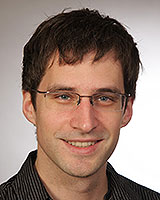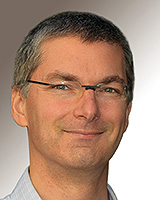European Research Council Funds Excellent Researchers of Heidelberg University
Two scientists of Heidelberg University are receiving highly endowed grants from the European Research Council (ERC) for excellent researchers: An ERC Starting Grant was awarded to the mathematician Dr. Sebastian Goldlücke, an Advanced Grant went to astrophysicist Prof. Dr. Ralf S. Klessen. Their respective research activities will start at the beginning of 2014 and will be funded for five years. Dr. Goldlücke will receive approximately 1.5 million euros for his research project at the Heidelberg Collaboratory for Image Processing (HCI), part of the Interdisciplinary Center for Scientific Computing, where he will investigate the acquisition and image processing of light fields. .Ralf Klessen’s research project on the origin of the first stars, conducted at the Institute for Theoretical Astrophysics at the Centre for Astronomy of Heidelberg University, is funded with about 2.5 million euros.
The ERC supports funding of basic research in order to promote visionary projects and develop new interdisciplinary fields of knowledge. Its funding programmes are open to top researchers of any age and nationality who want to conduct pioneering research in the 27 EU member states or in associated countries. Starting in 2013, the current ERC Starting Grants funding line is divided into ERC Starting Grants for promising young scientists at the beginning of an independent research career, and ERC Consolidator Grants for excellent scientists whose newly established independent research group is in the consolidation phase. Additional funding lines are Advanced Grants for excellent established scientists and Synergy Grants for groups of two to four researchers. Scientists who have already received a Starting or Advanced Grant are also eligible for the “Proof of Concept” scheme that aims at turning ideas from research projects into innovations.

In the ERC-funded „Light Field Imaging and Analysis“ project, Dr. Goldlücke will investigate the acquisition and image processing of light fields. "A light field of a scene is best described as a collection of views gathered from different perspectives," explains Dr. Goldlücke. These light fields can be directly acquired thanks to modern camera technology. Unlike conventional images, these images acquire directional information in the process. "Our goal is to develop robust and innovative processes for reconstructing the geometric structure of a scene, the surface properties of the objects, and the lighting. Much more data can be derived from light fields than images," explains the Heidelberg mathematician. Possible applications include generating three-dimensional multimedia content for industrial quality control, driver assistance systems, robot navigation, and well as in the biological and environmental sciences," continues Dr. Goldlücke.
Bastian Goldlücke (b. 1974) studied mathematics and informatics at the Ilmenau University of Technology and completed his degree in mathematics at the University of Marburg. He received his doctorate at the Max Planck Institute for Informatics in Saarbrücken. Dr. Goldlücke was a software engineer in the field of industrial image processing from 2006 to 2008 prior to his postdoctoral work at the University of Bonn 2008/2009. He was a lecturer at the Munich Technical University in 2010/2011. After an interim professorship at the HCI, Goldlücke has led the "Light Field Analysis" working group there since March of last year. The Heidelberg Collaboratory for Image Processing is one of the "Industry on Campus" projects at Heidelberg University. The HCI conducts basic and applied research in image processing in partnership with well-known businesses.

In the ERC-funded “STARLIGHT: Formation of the First Stars” project, Prof. Klessen will investigate the birth of the earliest stellar populations in our cosmos, which formed just a few 100 million years after the Big Bang. These first stars brought to a close the so-called “dark ages”, during which no light visible to the human eye existed. They also played a major role in the formation of the first heavy elements and in the birth of the galaxies as we know them today. “While we understand fairly well the physical processes that govern stellar birth in our cosmic neighbourhood in the Milky Way, we know very little about how the first stars of the universe came into being,” explains Prof. Klessen. “Current theories are to some extent highly speculative and there is no direct observation data.” To gain deeper insight into the origin of the first stars, the Heidelberg astrophysicists will apply innovative theoretical and numerical methods in combination with detailed astronomical observations.
Ralf S. Klessen (born 1968) studied physics at Munich Technical University with a study sojourn at the University of Illinois at Urbana-Champaign. After completing his Diplom thesis at the Max Planck Institute for Astrophysics in Garching, he earned his doctorate at Heidelberg University in 1998 with research activities conducted at the Max Planck Institute for Astronomy in Heidelberg. As a postdoc, Ralf S. Klessen worked at Leiden Observatory (Netherlands) and the University of California in Santa Cruz (USA) before he became head of the “Theory of Star Formation” Emmy Noether Junior Research Group at the Leibniz Institute for Astrophysics in Potsdam in 2002. He habilitated in 2004 at the University of Potsdam and was appointed professor of theoretical astrophysics at Heidelberg University in 2006. Ralf S. Klessen is the deputy spokesperson of the Heidelberg “The Milky Way System” Collaborative Research Centre (CRC 881) and currently Dean of Studies of the Faculty of Physics and Astronomy.


